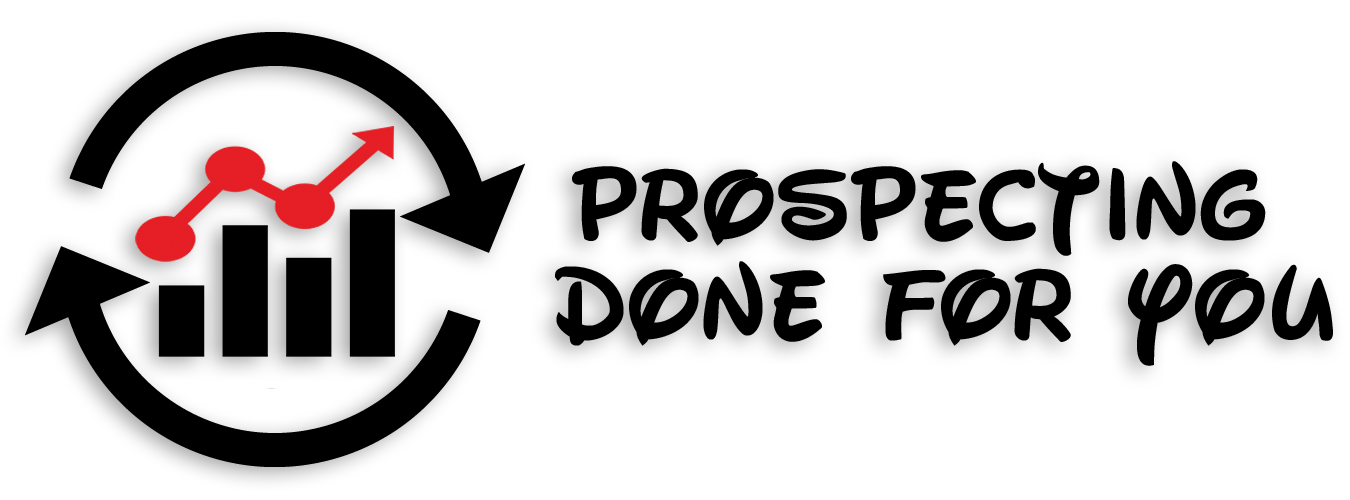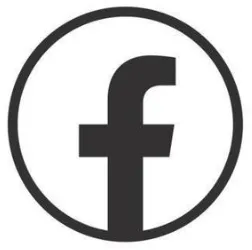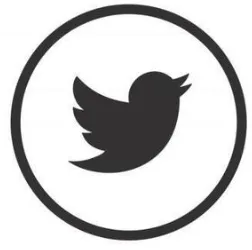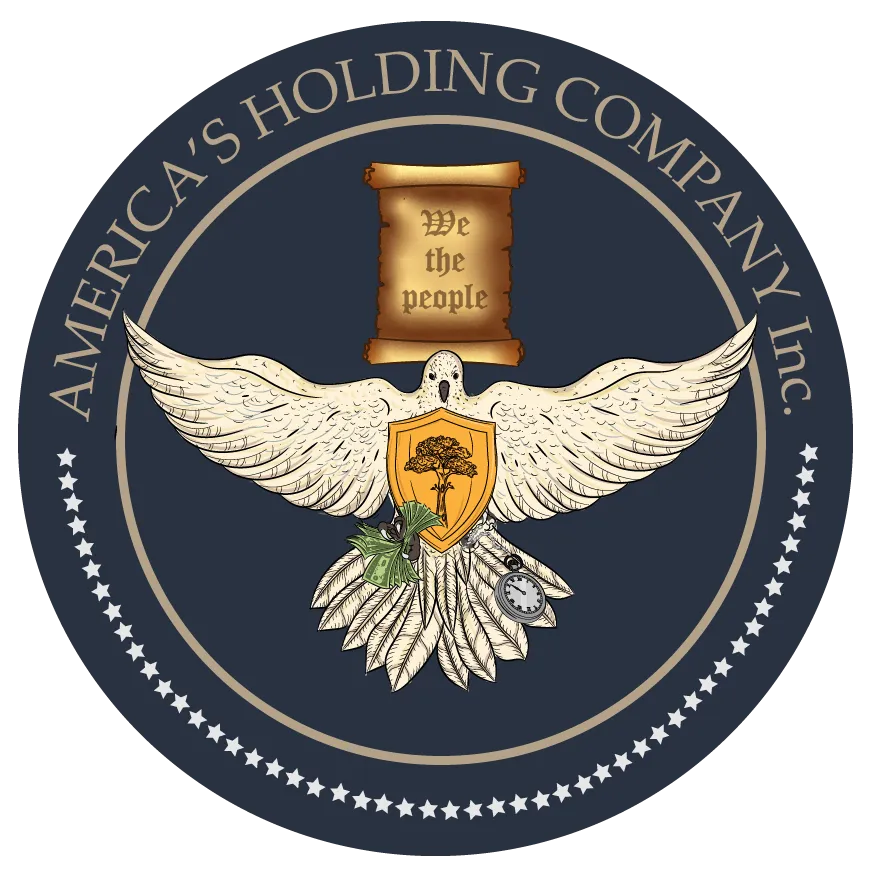The Prospecting Done For You Blog
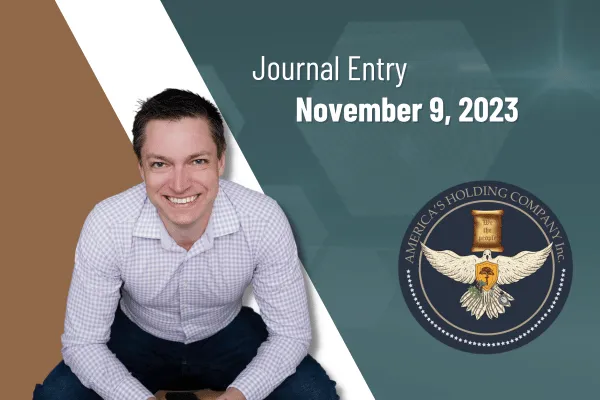
November 10, 2023: Listening to The Four Obsessions of an Extraordinary Executive by Patrick Lencioni - Part 1
Newsletter Sent out today:
HEAD OF HR
I am being moved into head of HR. I'll be head of customer service and head ofHR for the time being. We're working on the ESOP later today and overall very excited for everything we have going on.
AN EXECUTIVE ORGANIZATION: THE MAKING OF A SUPERTEAM
Audible presents by Patrick Lincioni Read for you by Charles Strandsky with an introduction read by the author. Every organization provides its leader more distractions and concerns. The key to managing this challenge is to identify a reasonable number of issues.
ORGANIZATIONAL HEALTH: THE FOUR ESSENTIAL STEPS
All successful organizations share two qualities. They are smart and they are healthy. Healthy organizations have a way of making themselves smarter. No one but the head of an organization can make it healthy. The purpose of this book is to help executives understand the power of organizational health.
IN THE ELEVATOR WITH RICH O'CONNOR AND VINCE GREEN
Rich O'Connor and Vince Green were CEOs of the area's top technical consulting firms. But in spite of all their similarities, they suddenly became quite different CEOs. One night Rich decided to change his career, and his life forever.
Daily Podcast Journal:
Daily Video Journal:
Daily Journal Transcript:
Good morning. Good morning. Good morning.
It is November. Oh, what is it? It is the oH, I've missed it somewhere. 10th Friday, November 10 so I am just about to head out to Kaitech.
We have been working through EOS and working on a lot of growth strategies, so one of our homework assignments is to listen or read the four obsessions of an extraordinary executive. So I am going to start on our daily journals. I'm going to give a quick update and then I'm going to listen to it with everybody.
So my quick update is I am being moved into head of HR. So I'll be head of customer success and head of HR for the time being. We'll see how these roles play out, where my needs are best, where I'm most needed, and where I want to be.
So very cool stuff. We're working on the ESOP later today and overall very excited for everything we have going on. With that said, let's listen to the four observations of an extraordinary executive organization, he said.
Leadership teams, on the other hand, resolve their issues and create this is audible. There we go. So you can see it's two and a half hours.
Audible presents by Patrick Lincioni Read for you by Charles Strandsky with an introduction read by the author Damn it, Penny. Everything is important then nothing is. No one understands the power of this saying more than a person who leads an organization.
Penny, come here. Every organization provides its leader more distractions and concerns. The key to managing this challenge is to identify a reasonable number of issues.
I forgot to put the dock door thing in and Penny does not know how to stay yet. Daddy, I forgot to put the dog cover in, so I'm very glad she did not escape with the garage door open. Who? All right, here we go.
We are now off. That will have the greatest possible impact on the success of your organization and then spend most of your time thinking about, talking about, and working on those issues. But what are they? Before we can identify them, it is important to understand what is ultimately necessary for organizational success.
I believe that all successful organizations share two qualities. They are smart and they are healthy. An organization demonstrates that it is smart by developing intelligent strategies, marketing plans, product features, and financial models that lead to competitive advantage over its rivals.
It demonstrates that it is healthy by eliminating politics and confusion, which leads to higher morale, lower turnover, and higher productivity. As important as both of these topics are, I have found that most leaders spend the majority of their time and energy making their organization smarter, with relatively little effort directed toward making them healthier. Now this is understandable considering the predominant focus of business schools and business media.
It is regrettable, however, when one considers the powerful and unique attributes of organizational health. First, healthy organizations have a way of making themselves smarter. Even if their ideas are temporarily inferior to those of competitors, they are usually humble and efficient enough to recognize their deficiencies and make changes in their plans before it's too late.
On the other hand, plenty of anonymous and forgotten companies have squandered intellectual advantages because of infighting, lack of clarity, and other problems that plague unhealthy organizations. Second, healthy companies are far less susceptible to ordinary problems than unhealthy ones. During difficult times, for instance, employees will remain committed to a healthy organization and stay with it longer, ultimately working to reestablish competitive advantage.
Finally, and this point is critical, no one but the head of an organization can make it healthy. While executives often successfully delegate responsibility for strategy, technology, marketing, or finance to their direct reports, they cannot assign responsibility for their organization's cultural wellbeing to anyone but themselves. And so, as OD as it may seem, it is actually more important for leaders to focus on making their organizations healthy than on making them smart.
But don't misunderstand me, not for a second Am I saying that issues like strategy, product innovation, and marketing are unimportant. They are indeed critical and deserve a great deal of mindfulness from any executive team. It's just that these topics receive a wildly disproportionate amount of attention from well meaning and intelligent executives who somehow cannot find the time and energy to focus on making their organizations healthier.
Why does this happen? Because organizational health is relatively hard to measure and even harder to achieve. It feels soft to executives who prefer more quantitative and reliable methods of steering their companies. It also entails longer lead time to implementation than does a technical or marketing strategy, which yields more immediate results and gratification.
But perhaps most important of all, organizational health is often neglected because it involves facing realities of human behavior that even the most committed executive is tempted to avoid. It requires levels of discipline and courage that only a truly extraordinary executive is willing to embrace. The purpose of this book is to help executives understand the disarming simplicity and power of organizational health and the four actionable steps that allow them to achieve it.
It begins with a tale of two companies, a healthy one fighting off a potential virus and an unhealthy one searching desperately for the cure. This is a work of fiction. Any resemblance to real life is purely unavoidable.
The four obsessions of an extraordinary executive, Rich O'Connor's detractor said he was lucky. Others believed he had a natural gift for management and leadership. Little did they know.
Part One Green's pain the rival $80 million in annual revenue should have made him happy, or at least not bitter. But Vint Green, the founder and CEO of Greenwich Consulting, would not be satisfied until his company was recognized as the number one technical consulting firm in the Bay AreA. And on particularly bad days, he joked that he would be truly happy only when his competitor, Telegraph Partners, was dead.
It wasn't that Telegraph was much larger than Greenwich. In fact, from time to time, Greenwich rivaled Telegraph's quarterly revenue, although its profits never seemed to do so. More than the financial war, it bothered Vince and his staff that Greenwich couldn't seem to win any of the less tangible battles.
Telegraph was always regarded as a darling of the trade press. Industry analysts fawned over them. Telegraph's clients raved about their services and even stood by them during difficult times.
Though Greenwich certainly garnered its share of new business, retaining clients felt like a constant struggle. On the other hand, life seemed too easy for telegraph, and if this bothered Vince, then the battle for employees enraged him. Telegraph didn't have to work as hard or spend as much money recruiting good people.
To make matters worse, there seemed to be a small but steady stream of employees leaving Greenwich to join Telegraph. But rarely did traffic flow in the other direction. And in those few instances when employees actually did leave Telegraph for Greenwich pastures, they rarely stayed more than a year.
Perhaps the most subtle but frustrating aspect of the competitive relationship that kept Greenwich executives awake and angry at night was the fact that Telegraph CEO Rich O'Connor rarely, if ever, acknowledged Greenwich. Not during press interviews, conference speeches or client presentations. And when a Greenwich executive occasionally met Telegraph's chief executive during an industry event.
Almost without fail, he seemed genuinely disinterested in Greenwich and unaware of what his largest and most direct competitor was doing. All of this would have been less frustrating had Greenwich not invested so much time and money learning about its rival. From interviews with former Telegraph employees to minor acts of legal corporate espionage, Greenwich had amassed as much knowledge about its competitor as about any of its own clients.
Still, none of the surveillance yielded anything that Greenwich could put to use until now. Reconnaissance. As part of his desire to understand the mystery of Telegraph's success, Vince Green occasionally invited business scholars to his staff meetings.
Strategy experts, marketing professors and finance gurus had analyzed Telegraph's practices, paying particular attention to any areas where Telegraph and Greenwich differed. Much to the dismay of Green and his team, these experts usually found little real difference between the rival firm's business strategies. Both companies recruited from the same schools.
They paid their employees similar salaries. Greenwich actually paid slightly more. They invested roughly equal amounts of money in marketing.
The financial models they used to run their businesses were remarkably similar. Even the prices they charged clients and the services they offered were almost identical. Confounded by the lack of insight gained from these high priced analysts, Green reluctantly agreed to have a local organizational development professor and consultant compare the cultures of the two companies.
On the day that she came to present her findings at the weekly executive staff meeting, Green was in no mood to listen to the psycho babble about the importance of employee picnics and holiday parties. He would be pleasantly surprised. The consultant immediately grabbed the attention of everyone seated around the conference table.
Based on the information available and the research I've done, there is so little in common between Greenwich and Telegraph that making comparisons extremely difficult. Amazed by the apparent ridiculousness of the remark, Green was on the verge of bringing the presentation to an early halt. But before he could do so, she continued, something about Telegraph's culture is remarkable, like none I've ever seen.
Their ability to attract clients and employees, to retain clients and employees, and even to maintain a loyal base of former clients and employees, is really very impressive. Greenwich team is caught between two strong emotions, a sense of relief at finally having discovered even a kernel of insight that might help them understand telegraph and Wade's disappointment that their competitor had recruited yet another admiring fan. Green was too driven to let jealousy override his desire to understand his competitor.
So what exactly are they doing? Although the consultant could not ascertain the core reasons for the cultural discrepancy, she spent the next hour simply describing various aspects of Telegraph's culture. Apparently there was almost no politics, very little voluntary turnover, and relatively few lawsuits brought by disgruntled employees. Even most of the former employees I spoke to raved about the firm's culture.
The executive team listened closely, asked questions, and scribbled notes like college students the day before a final exam, the consultant eventually concluded her remarks. Essentially, they have an organization that is so sound. So she struggled for the right word, so healthy that it makes them immune to most threats.
This, more than anything else they're doing, seems to be driving their success financially, strategically and competitively. I wish I knew exactly how they did it. Vince spoke for the first time in an hour.
So do I. Standing now, he waved and forced a smile to say thank you to the consultant and left the room immediately. No one could have known that he already had an idea.
Now where did I put that phone number part two the history two CEOs in many ways, Rich O'Connor and Vince Green were alike. Besides being CEOs of the area's top technical consulting firms, they were essentially likable and decent men, hoped to move tireless workers, fierce competitors, and committed husbands and fathers. They also happened to receive their training at UC Berkeley's business school at the same time, Vince had worked with a top management consulting firm before B school.
During his two years at Berkeley, he followed the stock market religiously, maintained contact with business associates, and read as many analyst reports as he could get his hands on. He graduated near the top of his class. Rich also earned impressive grades but maintained a relatively low profile in the process.
To earn extra cash, he waited tables and tutored undergraduate students. And when he wasn't working or in class, he could be found at the psychology lab where his wife to be worked. Because Rich spent so much time away from the business school, he didn't establish quite as many close relationships with classmates as most others did.
When Vince decided to start his own consulting firm just a few years out of school, no one was surprised when Rich did the same thing two months later, no one noticed. The timing for getting into technical consulting was ideal, and for their first three years in business, both firms grew dramatically. Each CEO believed his success was a result of extremely hard work, a little luck, and amazing attention to detail within his respective firm.
Both of them received regular reports about virtually every consulting engagement that their firms took on. They knew where every dollar was being spent, how much every client owed, and which competitors were bidding on which projects. During this time, Rich and Vince developed a cordial, though somewhat distant relationship.
Although the two rivals respected one another, they also knew that the other would be glad to take his business away from them if he lost his edge. So they were determined to never lose their edge. Neither firm established any discernible advantage over the other, and they shared much of the emerging local spotlight.
When it came to consulting, Vince liked to say that their companies maintained a degree of balance that made coexistence possible, even enjoyable, until something changed out of nowhere. Telegraph seemed to gain an advantage over its rival. Before he knew what was happening, Vince found himself increasingly frustrated by his firm's inability to compete with telegraph on a variety of issues.
What he didn't understand at the time was that in spite of all their similarities, he and Rich O'Connor had suddenly become quite different CEOs. Desperate epiphany it happened late one night while Rich sat alone at his home office contemplating selling his beloved three year old company. He was about to break under the pressure of trying to balance his family and his successful but demanding business.
It seemed that with every passing month, there was more to know. Competitive analysis, technology advancements, industry trends, client updates, and less time to learn about it all. But Rich prided himself on knowing his firm inside and out.
And he always found a way to stay on top of what was going on in telegram. It was when he missed his third consecutive Little League game that things began to unravel. He and his wife had begun to lose patience with his increasingly unmanageable schedule.
And as hard as he tried, Rich could see no relief in sight. Selling the firm and taking on a less demanding job seemed like the only way to alleviate the pressure on him and his family. But the company had become such a part of Rich's life that he was unable to pull the trigger on a sale.
So he decided to try an experiment. For three months, he would quietly limit himself to 50 hours work weeks far below his usual 70, which would give Rich plenty of time for his family. At the end of the experiment, if the firm were showing any signs of distress, he would sell.
For the first month, he struggled, often bringing work home with him in violation of his personal pact, trying desperately to handle the same set of responsibilities. In less time, Rich only seemed to be falling further behind. Both his family and his staff were equally unhappy with the change, one that they really didn't understand.
Then, during another long and painful night in his home office, Rich made a decision that would change his career, his company, and his life forever. On the verge of resigning himself to giving up the firm, he decided to make one final, desperate attempt at success. Instead of scouring his schedule each week in search of activities that he could eliminate, Rich decided to turn the nature of his inquiry upside down.
He wrote a simple question on a piece of paper. What is the one thing I do that really matters to the firm? Rich stared at the question for almost an hour, but nothing came to him. Then he suddenly began to laugh.
To himself, even he wondered if the situation wasn't driving him a little crazy. But nothing about the way Rich felt was irrational. In fact, his laugh was driven by equal parts of absurdity, simplicity, and insight.
As the gravity of his breakthrough soaked in, Rich began to write his thoughts down on paper. After almost 2 hours, Rich had abandoned his goal of identifying a single area of focus in his job. Instead, he expanded it to four basic activities, disciplines.
Reading, which he neatly captured on a yellow piece of legal paper. He placed it inside his briefcase and went to bed with a sense of excitement, relief and hope that he hadn't felt since starting the firm three years earlier. Practice When Rich woke the next morning, his sense of relief from the previous evening had faded somewhat.
But when he arrived at work, he removed the yellow paper from his briefcase, stared at it for a few minutes, and felt his excitement begin to resurface almost immediately. Taping the yellow list to the top of his desk, Rich could not stop thinking about the four disciplines that he had discovered the previous night. For the next few mornings, he began his day by reviewing the list and making necessary adjustments to his schedule.
After only a week, Rich's mindset had begun to change dramatically. Within a few more weeks, Rich found himself thinking very little about his competition, and he lost interest in many of his previous duties, like reviewing monthly billing records and expense details. He was leaving the office at 630 every evening, and without his usual portfolio of reports and other breeding material.
More and more of Rich's responsibilities were being delegated to his staff members, who were quietly speculating that he might be preparing to let go of the business. But soon it became clear to everyone that Rich was more engaged than he had been in almost a year, in spite of his delegation of so we are listening to the four obsessions of an extraordinary executive by Patrick Lencioni. I just got to work, so we will pick it up probably.
My guess is I'll start recording anytime I'm listening to it and we can listen to this book together. So that's my hope. Patrick Linzioni has done a bunch of business fables.
Amazing author. I would highly recommend get his books, learn from him, follow him on social media. He is really smart.
With that said, Have a great day everybody. We'll talk to you all soon. Bye.
